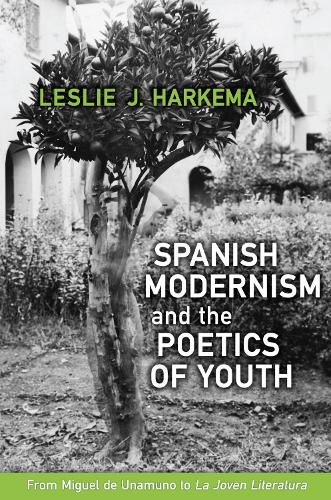Readings Newsletter
Become a Readings Member to make your shopping experience even easier.
Sign in or sign up for free!
You’re not far away from qualifying for FREE standard shipping within Australia
You’ve qualified for FREE standard shipping within Australia
The cart is loading…






In Spanish Modernism and the Poetics of Youth: From Miguel de Unamuno to La Joven Literatura, Leslie J. Harkema analyzes the literature of the modernist period in Spain in light of the emergence of youth culture in the late nineteenth and early twentieth century.
Harkema argues for the prominent role played by Miguel de Unamuno-as a poet, essayist, and public figure-in Spanish writers’ response to this phenomenon. She demonstrates how early twentieth-century Spanish literature participated in the glorification of adolescence and questioning of Bildung seen elsewhere in European modernism, in ways that were not only aesthetic but also political. Harkema critically re-examines the relationship between Unamuno and several Spanish writers associated with the so-called Generation of 1927 (known as at the time as la joven literatura or the young literature ). By situating this period within the wider framework of European modernism, Spanish Modernism and the Poetics of Youth brings to light the central role that the early twentieth century’s re-imagining of adolescence and youth played in the development of literary modernism in Spain.
$9.00 standard shipping within Australia
FREE standard shipping within Australia for orders over $100.00
Express & International shipping calculated at checkout
In Spanish Modernism and the Poetics of Youth: From Miguel de Unamuno to La Joven Literatura, Leslie J. Harkema analyzes the literature of the modernist period in Spain in light of the emergence of youth culture in the late nineteenth and early twentieth century.
Harkema argues for the prominent role played by Miguel de Unamuno-as a poet, essayist, and public figure-in Spanish writers’ response to this phenomenon. She demonstrates how early twentieth-century Spanish literature participated in the glorification of adolescence and questioning of Bildung seen elsewhere in European modernism, in ways that were not only aesthetic but also political. Harkema critically re-examines the relationship between Unamuno and several Spanish writers associated with the so-called Generation of 1927 (known as at the time as la joven literatura or the young literature ). By situating this period within the wider framework of European modernism, Spanish Modernism and the Poetics of Youth brings to light the central role that the early twentieth century’s re-imagining of adolescence and youth played in the development of literary modernism in Spain.